Name Brahmananda Saraswati | Died May 20, 1953, Kolkata | |
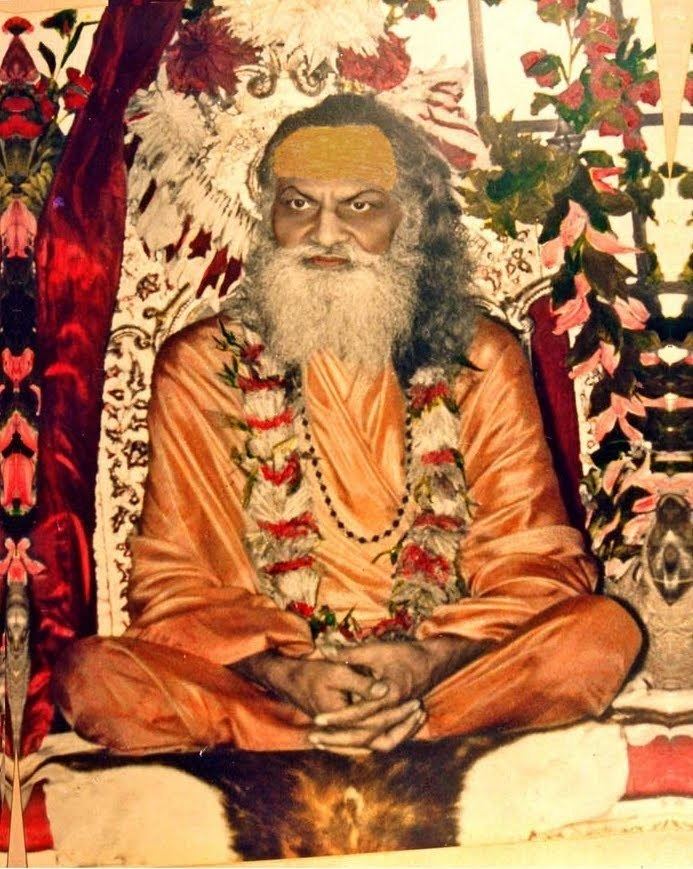 | ||
Guru Swami Krishananda Sarswati | ||
Swami Brahmananda Saraswati, Shankaracharya of Jyotir Math
Swāmī Brahmānanda Saraswatī (20 December 1868 – 20 May 1953) was the Shankaracharya of the Jyotir Math monastery in India. Born into a Brahmin family he left home at the age of nine in search of a spiritual master. At age fourteen he became a disciple of Swami Krishnānanda Saraswati. At the age of 34 he was initiated into the order of "Sanyas" and became the Shankaracharya of Jyotir Math in 1941 at age 70. His disciples included Swami Shantānand Saraswati, Transcendental Meditation founder Maharishi Mahesh Yogi, Swāmī Swarūpānanda Saraswatī and Swami Karpatri. Five months before his death in 1953, he made a will naming his disciple, Swami Shantānand Saraswati as his successor.
Contents
- Swami Brahmananda Saraswati Shankaracharya of Jyotir Math
- What is yoga swami brahmananda saraswati definition of yoga
- Early life
- Adult life
- Legacy
- References

What is yoga swami brahmananda saraswati definition of yoga
Early life
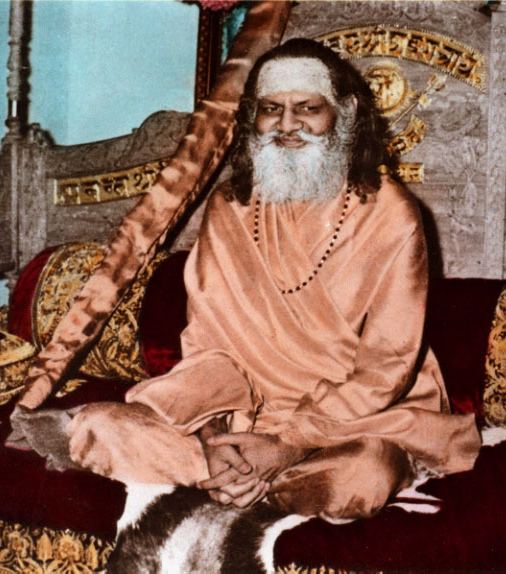
The Master later called Guru Dev by Maharishi and in the TM movement, was born into a Mishra Brahmin (priest caste) community in the village of Gana, near Ayodhya in Uttar Pradesh, India. He was called Rajaram in his younger days and was also known as Maha Yogiraj. At the age of nine Rajaram left his home unannounced to follow a spiritual path of renunciation but was soon returned to his parents by a policeman. On returning home, he asked his parents for permission to leave home and begin the life of a recluse. His parents wanted him to marry and live the life of a householder and asked their family guru to convince Rajaram to forget his dream of a reclusive life. The family guru, however, was so impressed with Rajaram's advanced state of wisdom and spiritual evolution that he gave up any attempt to change the boy's mind. The parents then also acquiesced and gave their permission for Rajaram to leave. Two days later Rajaram formally renounced his family life and left his boyhood home in search of solitude in the Himalayas. Rajaram traveled by foot to the town of Haridwar and then on to Rishikesh, the gateway to the Himalayas. Here he began the search for a suitable guru or spiritual master. Rajaram met many wise sages, but none of them met his requirements of lifelong celibacy and an intimate knowledge and experience of the Vedas.
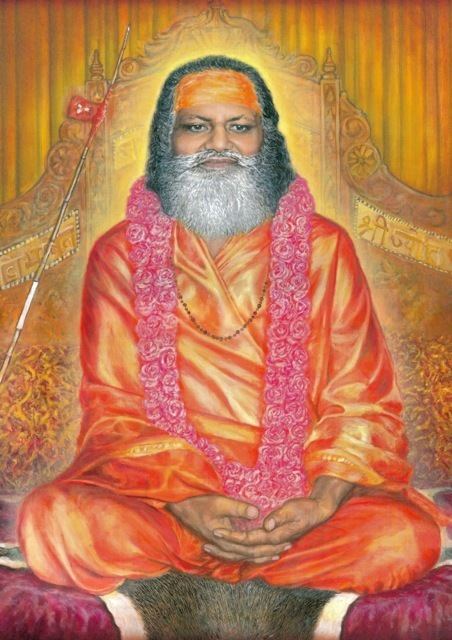
Five years later at the age of fourteen, in a village in Uttar Kashi, Rajaram found his chosen master and became a disciple of Swami Krishnānanda Saraswati. At that time, Rajaram was given the name of Brahma Chaitanya Brahmachari. He then became the favorite disciple in his master's ashram and, according his master's instructions, he retired to a nearby cave and visited his master only once per week. The story of Rajaram's youthful renunciation is said to echo the life of Shankara who reportedly began his renunciate life at the age of eight.
Adult life
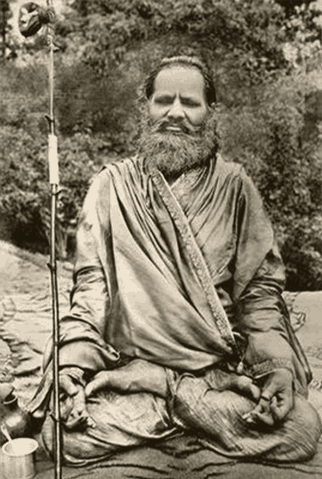
At the age of twenty five, (the later) Swami Brahmananda emerged from his cave and permanently rejoined his Master at his ashram. At the age of 34 he was initiated into the order of "Sanyas" by his master at the Indian celebration called Kumbh Mela. At that time, he was ordained into the ascetic order and given the formal name Swami Brahmānanda Saraswati, that is Swami Brahmananda of the Saraswati branch of the ancient Swami Order. He is reported to have created a cave in central India where he lived for forty years.
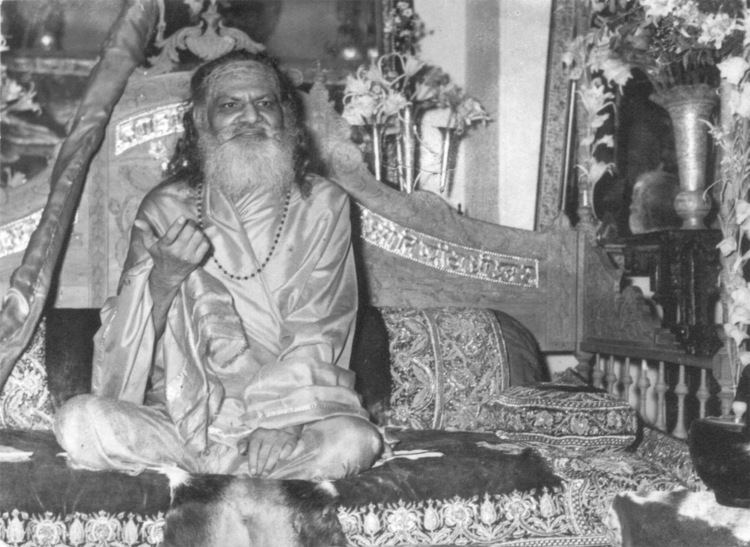
In 1941, at the age of 70, after repeated requests over a period of twenty years Brahmananda accepted the position of Shankaracharya (spiritual leader) of Jyotir Math, a position that had been vacant for more than 150 years. His disciple, Swami Karpatri is reported to have been the person who brought the request for Brahmānanda to take the post after a search for a proper candidate was initiated by Dharma Maha Mandal. Brahmananda is reported to have responded to the request by saying: "You want to put a lion to chains who moves about in the jungle freely. But if you so like, I honour your words and am ready to shoulder the responsibilities of the pitha (monastery) management. By shouldering this responsibility, I would be serving the cause for which Adi Shankaracharya stood. I fully dedicate myself for the mission."
The appointment of Swami Brahmananda on 1 April 1941 was made by a group of monks and pandits based in the city of Varanasi with the endorsement of Svāmī Bhāratī Kṛṣṇa Tīrtha, the Śaṅkarāchārya of Purī and Svāmī Candraśekhara Bhāratī the Śaṅkarāchārya of Śṛṅgeri. As respected supporters of religious institutions the rulers of the cities of Garhwal, Varanasi and Darbhanga also endorsed Brahmananda and their recognition helped overcome opposition from previous claimants to the title. Brahmandanda was also seen as the embodiment of the qualifications mentioned in Vedic texts and this assisted in his unhindered ascension to the position at the age of 70.
Shankaracharya Brahmananda Saraswati was charged with reconstructing the temple and institution at Jyotir Math. Through the assistance of the local Deputy Commissioner and parties responsible for his nomination, he reclaimed the surrounding land that had been encroached upon by local farmers. Under his leadership a two-story, 30-room building was constructed to serve as the "Peeth Bhawan" of Jyotir Math. He also supervised the final construction of the Shrine of Purnagiri Devi about 100 yards in front of the new monastery which "the Darbhanga ruler" had begun just prior to his death. Saraswati's leadership was instrumental in re-establishing the Jyotir Math as "an important centre of traditional advaita teaching in northern India". He spent most of his time as Shankarcharya travelling around northern India giving lectures in an effort to re-establish the correct understanding of Shankara's teachings.
According to Sri Brahmananda's disciple, Maharishi Mahesh Yogi, Sri Brahmananda's "devotees felt that the expression 'His Holiness' did not adequately describe this personified Divine Effulgence; and so the new expression 'His Divinity' was used. With such unique adoration of newer and fuller grandeur, transcending the glories of the expression of antiquity, was worshiped the holy name of Guru Deva, the living expression of Upanishadic Reality, the embodiment of the transcendent Divinity." and Sri Brahmananda was visited by Rajendra Prasad, the President of India, and the philosopher Sarvapalli Radhakrishnan, who succeeded Prasad as President of India. In 1950, President Radhakrishnan is reported to have addressed His Holiness as "Vedanta Incarnate, the embodiment of truth".
Shankaracharya Brahmananda Saraswati's disciples included Swami Shantānand Saraswati, TM founder Maharishi Mahesh Yogi, Swāmī Swarūpānanda Saraswatī and Swami Karpatri. Five months before his death in 1953, Brahmananda Saraswati made a will naming his disciple, Swami Shantānand Saraswati as his successor as Shankaracharya of the Jyotir Math monastery.
Legacy
The swami is said to have been one of those "rare siddhas (accomplished ones) who had the knowledge of Sri Vidya" and who was "modeled" after the great philosopher Adi Shankara. Within a decade of becoming Shankaracharya he accumulated many thousands of disciples and reinforced the concept of the Jyotir Math monastery as an important centre for Advaita philosophy. In 1979, the Federal Courts in Malnak v. Yogi found that TM teachers made multiple offerings and obeisances to a "deified Guru Dev" during the puja ceremony they performed before giving mantras to their students. However, it is the teaching of Maharishi Mahesh Yogi that "Individual is cosmic. Individual potential of life is cosmic potential. Individual is divine deep inside. Transcendental experience awakens that divinity in man...It's a human right to live divinity." In 2008, Maharishi Mahesh Yogi created a trust fund to support 30,000 Indian Vedic Pandits and named it after Brahmananda Saraswati.
